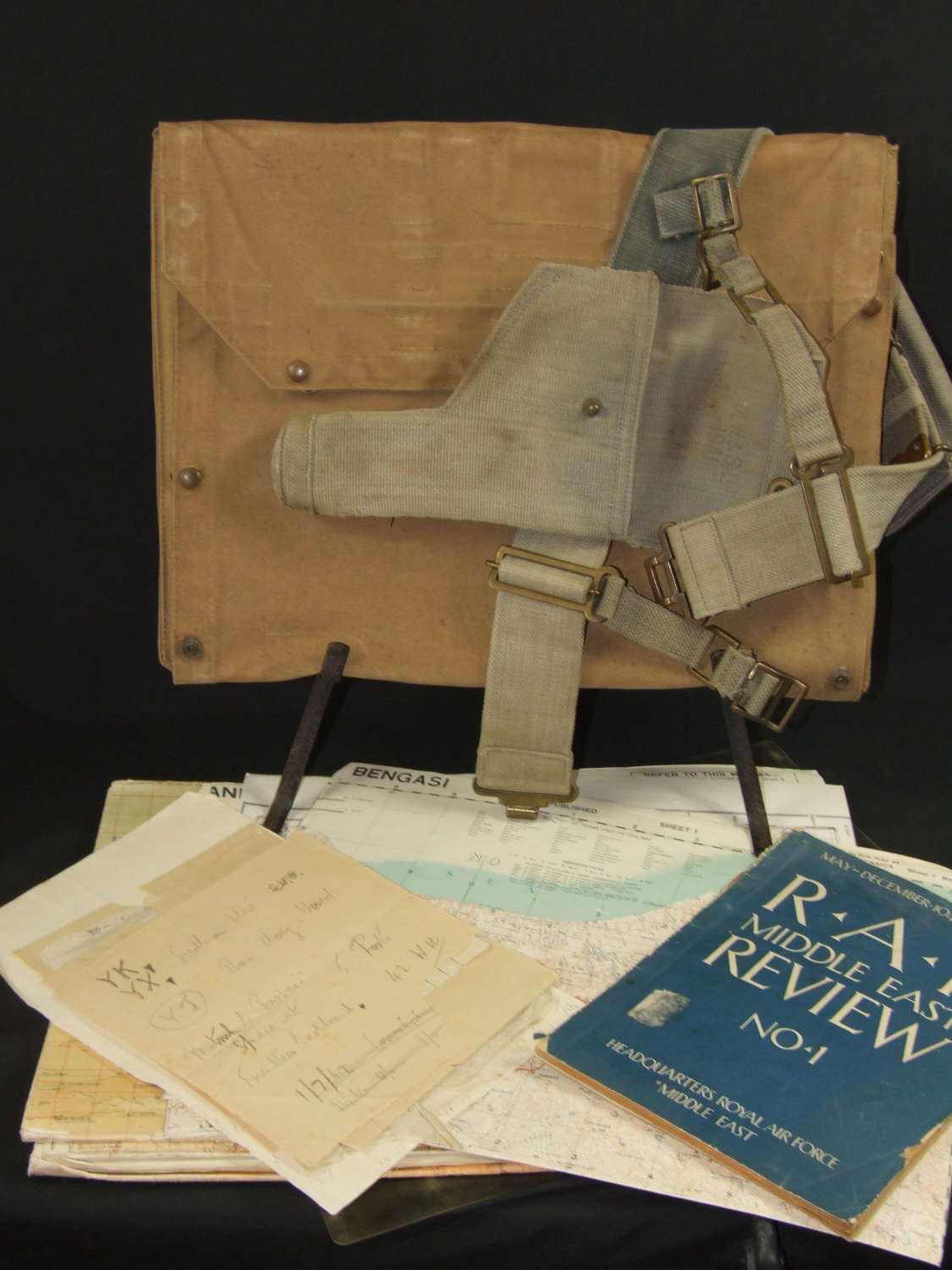
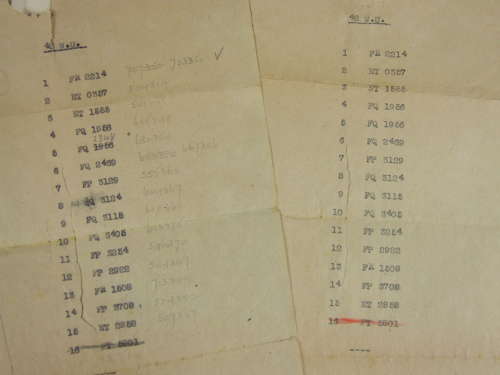

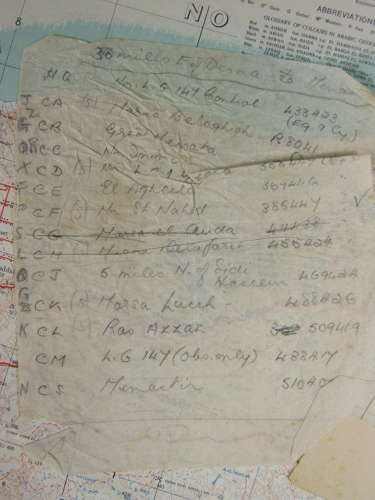

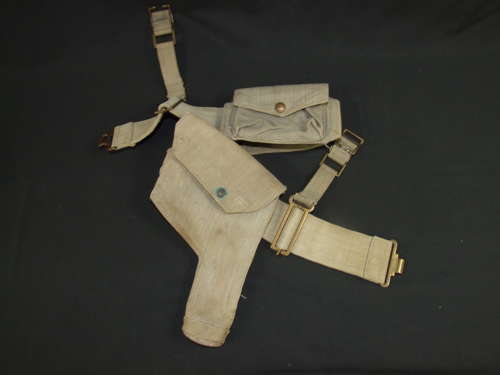

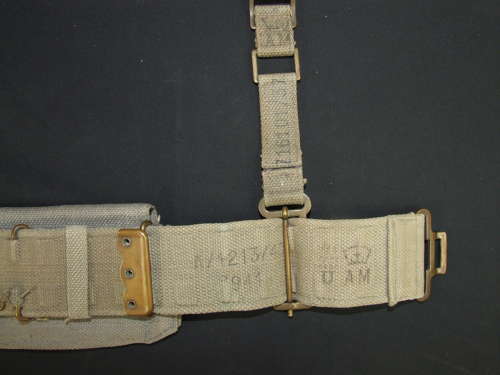


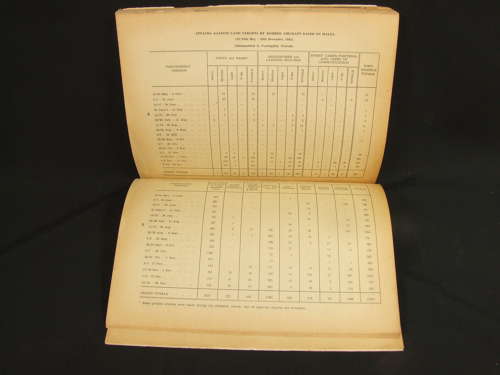


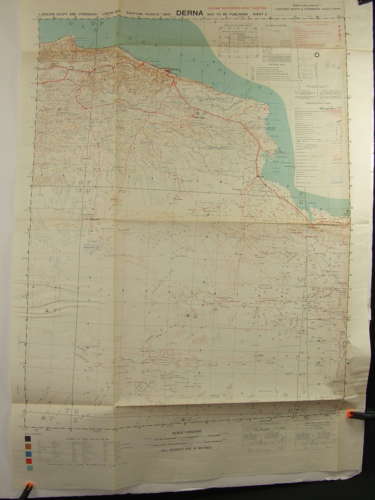
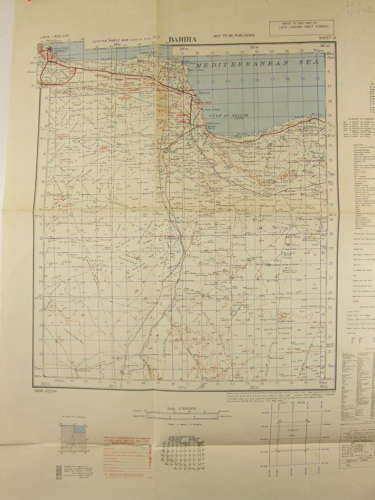
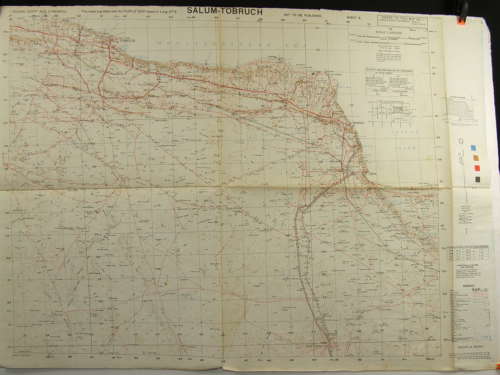
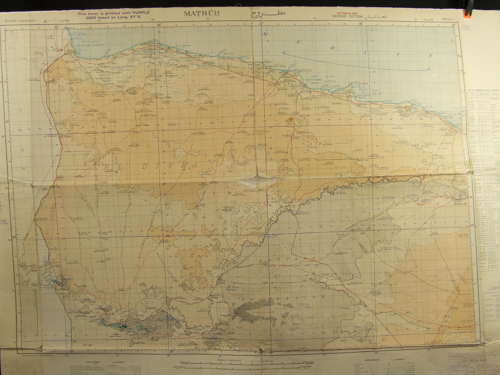






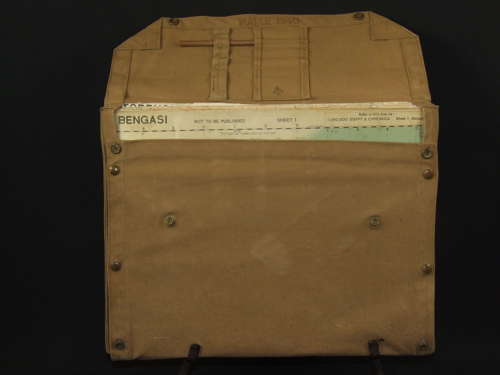

Code: 56523
A large collection of artifacts which appear to relate to RAF 42 Wireless Unit stationed in North Africa during the time of the North African campaign.
The collection seems to have belonged to one RAF officer serving with that unit and comprises:
His 1925 Pattern RAF three part waistbelt marked 524547 and dated 1941 along with the holster, ammunition pouch and brace attachments, all in very good condition.
A 1940 dated Map Case by Maple containing 10 Maps of the North African theatre, most dated 1941 or 1942 some with reference to the information having been obtained from aerial photographs provided by the SAAF and intelligence from the L.R.D.G. All in very good condition along with a steel stand for the Map Case.
A copy of RAF Review No.1 covering the activities of the RAF in the Middle East during the period May-Dec 1942, marked to 42 Wireless Unit and SECRET.
Various paperwork with codes and comments again showing the unit number.
What exactly the activities of 42 WU were I not been able to unravel and although I do know the Records Office holds details on them, I have not obtained that information. In volume 2 of Christopher Shores “A History of the Mediterranean Air War” he mentions on page 615, that 234 wing arrived at Mersa Matruh. ”Available to the wing were 127, 335 and 889 all with Hurricanes ,257 260, 274, 873 and 880 AMES, 31 and 42 WU……” This is only direct mention I can find anywhere on them.
My best guess is that they were one of the covert units based in the desert intercepting Luftwaffe communication and providing observations on German aircraft movements and known as a Wireless Observation Post.
Another possibility is that they were to act as Forward Air Controllers which were first used by the British Desert Air Force in North Africa during the North African Campaign when, in 1941 the British Army and the Royal Air Force established Forward Air Support Links (FASL), a mobile air support system using ground vehicles. Light reconnaissance aircraft would observe enemy activity and report it by radio to the FASL which was attached at brigade level. The FASL was in communication (a two-way radio link known as a "tentacle") with the Air Support Control (ASC) Headquarters attached to the corps or armoured division which could summon support through a Rear Air Support Link with the airfields. They also introduced the system of ground direction of air strikes by what was originally termed a "Mobile Fighter Controller" traveling with the forward troops. The controller rode in the "leading tank or armoured car" and directed a "cab rank" of aircraft above the battlefield.
The last image which can be found on the internet shows one of these units.
An interesting collection worthy of further research.